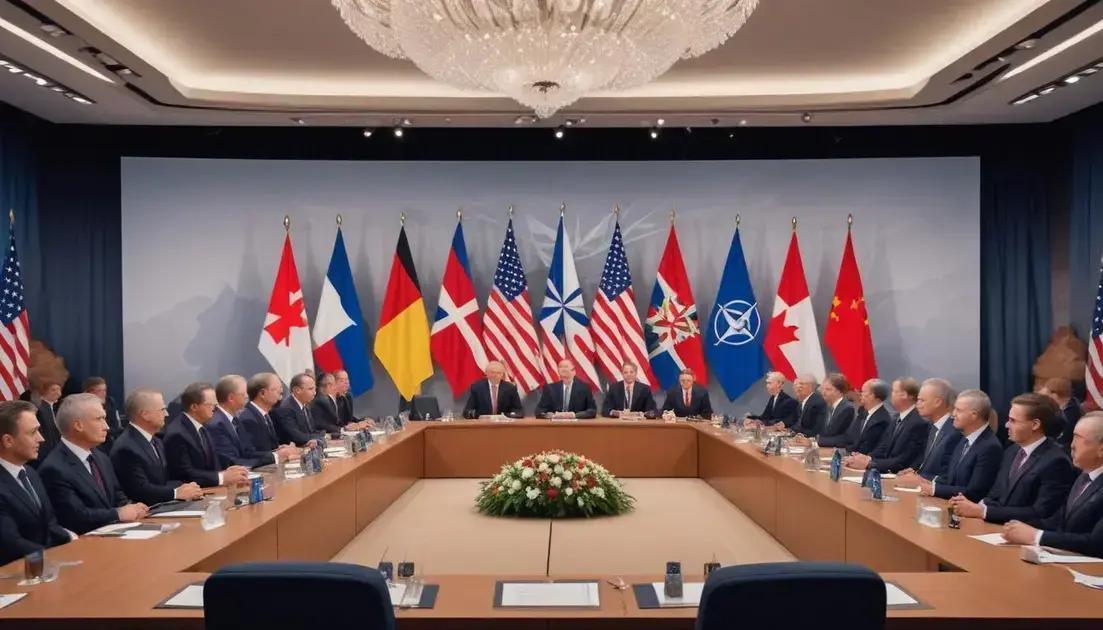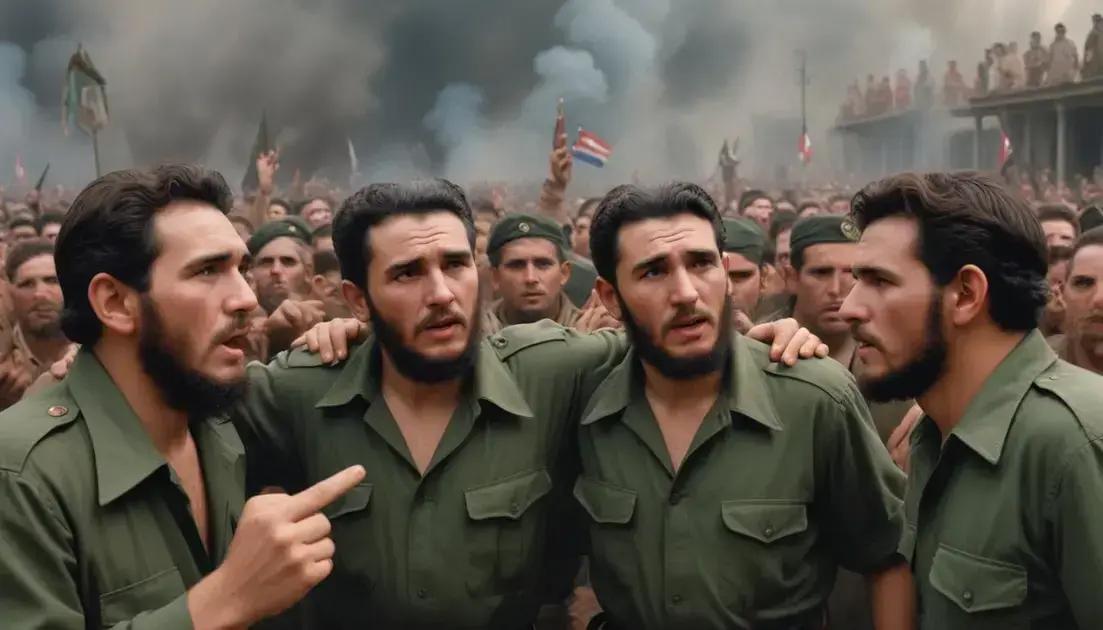
How NATO was born from fear.
NATO, established in 1949, has evolved significantly in response to global security challenges. Initially focused on countering the Soviet threat during the Cold War, NATO now addresses a wide range of issues, including terrorism and cyber threats. The organization fosters cooperation among member nations and expands partnerships worldwide, enhancing collective security. With continued adaptations to modern threats and a commitment to military readiness, NATO remains a crucial player in maintaining international stability and peace.
Have you ever wondered how NATO transformed from a simple defense pact into a global symbol of unity? From its inception during a time of fear, NATO has continually evolved to meet new challenges. Let’s dive into its fascinating journey!
The origins of NATO
The origins of NATO date back to 1949. After World War II, many countries sought security against the rising threat of communism. The North Atlantic Treaty Organization, or NATO, was created to ensure mutual defense among Western nations.
Key Founding Members
NATO was formed by twelve founding countries, including the United States, Canada, and several Western European nations. These countries united to enhance their security and establish a strong defense against potential aggression.
The Warsaw Pact
In response to NATO, the Soviet Union established the Warsaw Pact in 1955. This made the rivalry between NATO and the Warsaw Pact even more pronounced, defining the political landscape during the Cold War.
Significance of the Treaty
The North Atlantic Treaty emphasized collective defense. Article 5 states that an armed attack against one member is considered an attack against all. This principle is crucial in maintaining peace and stability in the region.
The Role of Military Alliances
Military alliances like NATO play a vital role in global politics. They help nations come together for defense, fostering cooperation and trust among member countries. NATO’s establishment marked a significant shift in how countries interact in times of conflict.
Key events leading to the formation
Several key events shaped the formation of NATO. The end of World War II saw Europe in ruins and facing new threats. The rise of the Soviet Union made many countries nervous about their security.
The Berlin Blockade
In 1948, the Soviet Union blocked access to West Berlin. This action alarmed Western nations. It showed how aggressive the Soviets could be and highlighted the need for a united defense.
Truman Doctrine
In 1947, President Truman announced the Truman Doctrine. This policy aimed to support countries resisting communism. It was a significant step in American foreign policy. Truman’s commitment to containment helped gather support for a military alliance.
Western European Union
The Western European Union formed in 1948. This alliance aimed to provide collective defense in Europe. The idea of mutual defense was gaining traction, paving the way for NATO.
Communist Activities in Greece and Turkey
Communist uprisings in Greece and Turkey added urgency to the situation. Western nations saw the need to protect these countries from falling into the Soviet sphere. This further convinced leaders to unite for defense.
All these events led to discussions about creating a military alliance, ultimately resulting in the signing of the North Atlantic Treaty in 1949.
The Cold War impact
The Cold War had a significant impact on NATO’s development. It began after World War II and lasted for several decades. During this time, tensions between the Soviet Union and the Western nations increased sharply.
Defense Strategy
NATO countries focused on a defense strategy against potential Soviet attacks. They strengthened military forces and built bases in various locations. This buildup was crucial for deterring aggression and maintaining peace.
Mutual Defense Commitment
Article 5 of the North Atlantic Treaty became incredibly important during the Cold War. It states that an attack on one member is an attack on all. This commitment created a sense of security among allies and discouraged Soviet aggression.
Military Exercises
NATO conducted regular military exercises to ensure readiness. These exercises helped member countries coordinate their efforts and improve their strategies. They increased trust and cooperation among allies.
Expansion of Membership
The Cold War also led to NATO’s expansion. As countries in Eastern Europe sought protection from Soviet influence, many applied to join NATO. This growth helped enhance security in Europe and deter communist expansion.
Influence on Global Politics
NATO played a key role in shaping global politics during the Cold War. It became a symbol of the struggle between democracy and communism. This influence continues to be felt even after the Cold War ended.
NATO’s evolution over decades
NATO has evolved significantly since its formation in 1949. Originally, it was focused on defending Western Europe against the Soviet Union. Over the decades, its role has expanded and adapted to new challenges.
Post-Cold War Changes
After the Cold War, NATO shifted its focus. The organization began to address security issues beyond Europe. This included tackling terrorism and regional conflicts in places like the Balkans.
New Members
NATO has grown by welcoming new members. Countries from Eastern Europe, like Poland and the Czech Republic, joined in the late 1990s. This expansion aimed to ensure stability in the region.
Partnerships and Cooperation
NATO also formed partnerships with other countries and organizations. Programs like the Partnership for Peace expanded cooperation beyond its member states. It helped build relationships with nations in various regions.
Responding to Global Threats
As global threats evolved, NATO adapted its strategies. The organization addressed issues like cyber threats and missile defense systems. These adaptations ensure that NATO remains relevant in a changing world.
Continuing Role in Peacekeeping
NATO continues to play a vital role in peacekeeping missions. It has engaged in operations in Afghanistan and Libya, showcasing its commitment to global security. These missions underline NATO’s shift from defense to a broader security perspective.
Current role of NATO in global politics
NATO plays a vital role in today’s global politics. It continues to be a key player in ensuring international security. With challenges like terrorism and cyber threats, the organization has adjusted its focus to meet current needs.
Counterterrorism Efforts
NATO supports member countries in combating terrorism. It helps share intelligence and improve coordination among allies. This cooperation is crucial for addressing threats effectively.
Cybersecurity Initiatives
As technology advances, cyber threats have become a major concern. NATO is working on enhancing cybersecurity measures for its members. This includes sharing best practices to protect critical infrastructure.
Crisis Management Operations
NATO remains involved in various crisis management operations. The organization takes part in peacekeeping missions and humanitarian efforts globally. These missions reflect NATO’s commitment to maintaining stability in troubled regions.
Engaging with Global Partners
NATO engages with non-member countries and international organizations. This helps foster partnerships that strengthen global security. Collaborations with organizations like the United Nations show NATO’s commitment to a broader approach.
Focus on Defense Spending
NATO continues to encourage member nations to invest in defense. The aim is to ensure preparedness against emerging threats. Increased defense spending enhances collective security but also supports national interests.
Conclusion
In conclusion, NATO’s journey from its founding to its current role in global politics shows its importance in maintaining security. Its evolution reflects changes in the world, adapting to threats like terrorism and cyber attacks. By fostering cooperation among member nations and building partnerships globally, NATO is crucial in promoting peace and stability.
As NATO continues to address modern challenges, its commitment to collective defense remains strong. This organization demonstrates that unity can overcome threats and build a safer future for all. Ultimately, NATO’s ongoing efforts exemplify how collaboration among countries can lead to a more secure world.


